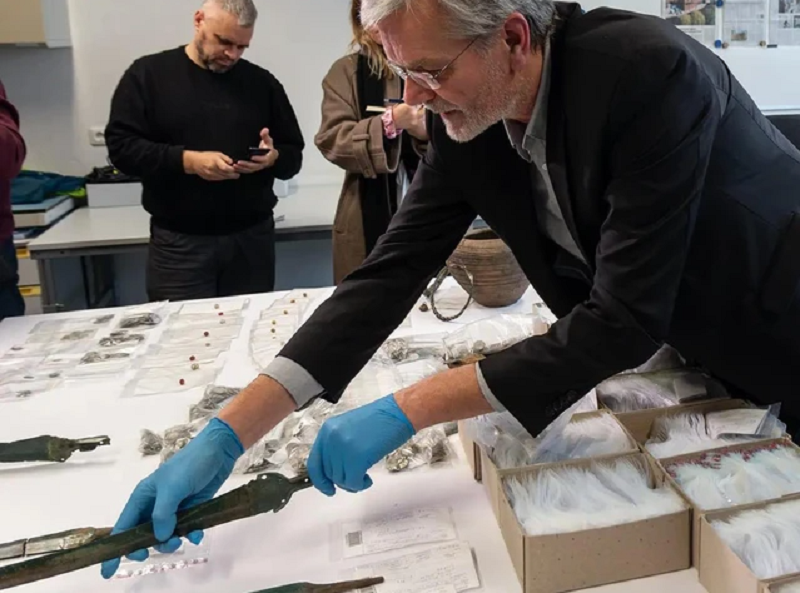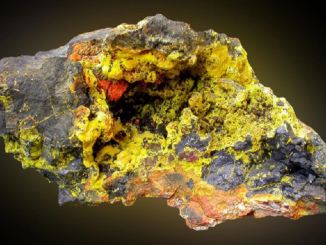The three treasures include thousands of ancient coins and dozens of other unique artifacts, which are extremely valuable not only because of their age but also because of the information they contain.
According to Heritage Daily, 3 treasures were collected by German archaeologists in the form of scattered fragments near the ground in the Mecklenburg-Western Pomerania state area.
They believe these were exposed after recent ground operations, including dredging to improve ditches or plowing fields.

The artifacts in the three treasures are being classified by scientists – Photo: LAKD
Announced from Germany’s State Office for the Preservation of Culture and Monuments (LAKD), the first treasure includes seven 3,000-year-old swords, which could have been used as burial or sacrificial objects during the Bronze Age.
Although a number of artifacts from this period have been found in the area, seven swords lying in the same place at the same time is unusual.
The area where they were discovered is in the Mecklenburg Lake district of the state of Mecklenburg-Western Pomerania.
At another location in this district, a second treasure consisting of two relic boxes also appeared unexpectedly in an almost exposed position.
Inside the boxes, in addition to the relics – including an ancient cross – were also 1,700 coins, rings, pearl necklaces, crystals and other jewelry beads.
These are considered major discoveries because they serve as rare evidence of the Christian faith in an area largely influenced by other faiths of the period.
Meanwhile, a third treasure appeared almost at the same time near Rügen – also in the state of Mecklenburg-Western Pomerania – including 6,000 silver coins from the 11th century.
The coins in this millennial treasure trove are largely of West German origin, but also include a few coins from England, Denmark, Bohemia and Hungary.
“This is the largest hoard of Slavic coins ever found from the post-war period until now,” LAKD said.
This treasure promises to reveal possibly unknown trade relationships in the 11th century, helping archaeologists rewrite a relatively little-known piece of history.
This is the first time archaeologists from the state of Mecklenburg-Western Pomerania have found so many valuable treasures at the same time.
The above publications are just the beginning, because the analysis of coins at the laboratory promises to pave the way for many other valuable studies in the future.


